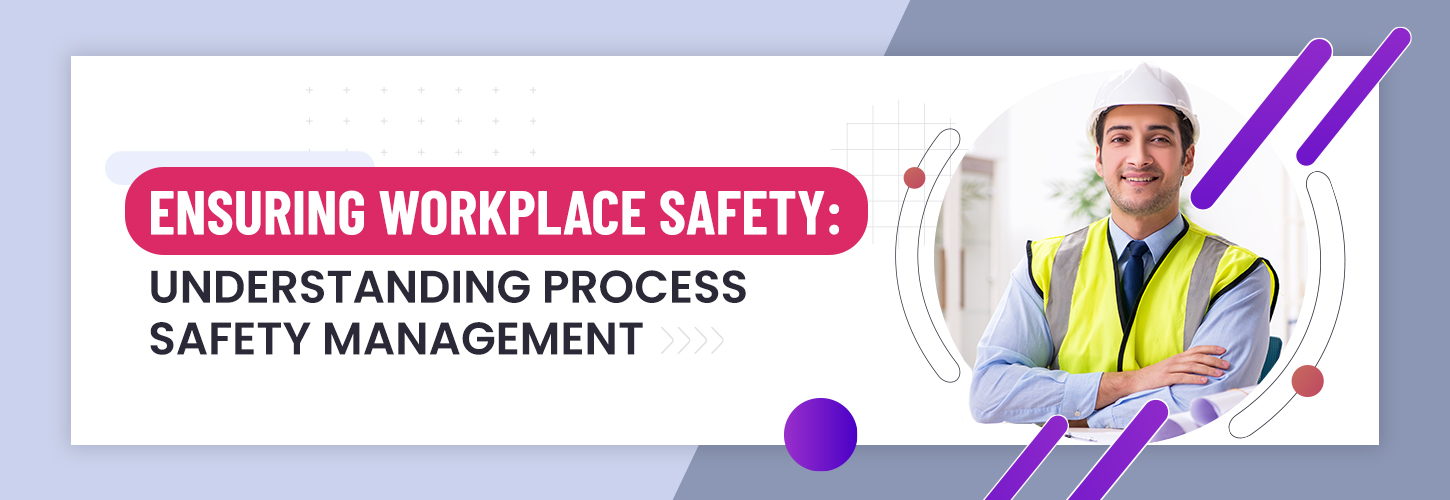Introduction
In today’s fast-paced industrial world, ensuring the safety of workers and the community is of utmost importance. One of the key pillars of maintaining a secure workplace is Process Safety Management (PSM). PSM is a comprehensive approach that helps industries manage and control potential hazards associated with their processes. In this blog article, we will explore what Process Safety Management is, its key elements, and its importance in preventing accidents and ensuring a safe working environment.
What is Process Safety Management (PSM)?
What is Process Safety Management (PSM)?

In PSM, industries analyze their operational procedures meticulously to detect potential hazards and vulnerabilities. They then implement a set of measures and protocols to address these risks effectively. The goal is to create a safe working environment for employees and protect nearby communities from the adverse consequences of accidents or chemical leaks.
Process Safety Management (PSM) is a systematic approach employed by industries to ensure the protection of their operations and avert disastrous incidents arising from the release of hazardous chemicals, energy, or other potentially harmful substances. PSM primarily centres on identifying, comprehending, and reducing risks associated with different processes within an industrial facility, which may include activities like manufacturing, refining, or handling chemicals.
By embracing PSM, industries demonstrate their commitment to maintaining high safety standards, minimizing the likelihood of accidents, and fostering a culture of risk awareness and responsibility. Regular assessments and continuous improvement efforts are integral parts of the PSM approach to guarantee the ongoing safety and security of industrial operations.

By embracing PSM, industries demonstrate their commitment to maintaining high safety standards, minimizing the likelihood of accidents, and fostering a culture of risk awareness and responsibility. Regular assessments and continuous improvement efforts are integral parts of the PSM approach to guarantee the ongoing safety and security of industrial operations.
Key Elements of Process Safety Management
Key Elements of Process Safety Management
Process Hazard Analysis (PHA) : This element involves a thorough examination of all potential hazards associated with the processes within an industrial facility. PHA methods, such as Hazard and Operability Studies (HAZOP) or What-If analyses, are used to identify risks, assess consequences, and develop appropriate risk-reduction strategies.

Operating Procedures : Clear and well-documented operating procedures are crucial for ensuring that all employees and contractors follow safe practices during normal operations, startups, shutdowns, and emergency situations. These procedures should be readily accessible and regularly updated to reflect any process changes.

Employee Training : A well-trained workforce is the backbone of any safety program. PSM emphasizes comprehensive training for all employees involved in the processes, ensuring they are equipped with the knowledge and skills to handle potential hazards effectively.

Mechanical Integrity : Regular inspections, testing, and maintenance of equipment and infrastructure are essential to prevent equipment failures and leaks that could lead to accidents. Maintaining mechanical integrity helps identify potential issues before they become critical threats.

Management of Change (MOC) : This element ensures that any modifications to processes, equipment, or materials undergo a thorough review to assess their impact on safety. Proper MOC procedures can prevent unintended consequences arising from process changes.

Emergency Planning and Response : Accidents can still occur despite all precautions. Having a well-developed emergency response plan and adequate training ensures that employees know how to respond swiftly and effectively in the event of an incident.

Incident Investigation : Understanding the root causes of any past incidents is vital to prevent their recurrence. PSM encourages a systematic investigation process to learn from accidents and make necessary improvements to prevent similar events.

Significance of Process Safety Management
Significance of Process Safety Management
Prevention of Accidents : The primary goal of PSM is to prevent accidents and avoid the loss of lives, injuries, or environmental damage. By proactively identifying and managing potential hazards, industries can significantly reduce the likelihood of catastrophic incidents.
Regulatory Compliance : : Many countries have stringent regulations concerning process safety. Implementing PSM not only helps industries meet compliance requirements but also demonstrates their commitment to ensuring the safety of their employees and the community.
Protection of Reputation : A major accident can cause severe damage to a company’s reputation, leading to financial losses and decreased investor confidence. PSM safeguards a company’s reputation by demonstrating responsible safety practices.
Enhanced Efficiency : An effectively implemented PSM program can lead to increased operational efficiency. Regular maintenance and monitoring of processes can reduce downtime, lower operational costs, and improve overall productivity.
Environmental Protection : PSM not only safeguards human safety but also helps protect the environment. Accidents involving hazardous substances can result in significant environmental damage, such as air and water pollution or soil contamination. Proper implementation of PSM ensures that processes are designed and operated in a way that minimizes the impact on the surrounding environment.
Risk Reduction : PSM involves a systematic approach to identifying, assessing, and controlling potential risks associated with industrial processes. By understanding and mitigating these risks, companies can reduce the likelihood of accidents and their potential consequences, leading to increased overall safety.
Increased Stakeholder Confidence : Implementing PSM demonstrates a company’s commitment to safety, which can enhance stakeholder confidence. This includes not only investors but also customers, suppliers, and local communities. Companies with strong safety records and proactive PSM practices often enjoy better relationships with their stakeholders.
Long-term Cost Savings : While implementing PSM requires initial investments, it can lead to significant long-term cost savings. By preventing accidents, companies avoid the financial burden of cleanup, legal liabilities, and potential fines. Additionally, well-maintained equipment and optimized processes result in reduced maintenance and operational costs over time.
Employee Morale and Retention : A strong safety culture created through PSM instills confidence and peace of mind among employees. When employees feel safe and valued, their morale improves, leading to increased productivity and reduced turnover rates. A stable workforce contributes to organizational stability and expertise retention.
Continuous Improvement : PSM is not a one-time process but an ongoing commitment to safety improvement. Regular audits, risk assessments, and incident investigations allow companies to identify areas for improvement and implement necessary changes. This continuous improvement mindset leads to a safer and more resilient organization.
Emergency Preparedness : Part of PSM involves having robust emergency response plans and training programs in place. This ensures that employees are prepared to handle potential emergencies effectively, minimizing the impact on personnel, property, and the environment.
Legal and Ethical Responsibility : Beyond regulatory requirements, implementing PSM aligns with a company’s ethical responsibility to prioritize safety. Companies have a duty to protect their workforce, the public, and the environment from harm caused by their operations, and PSM helps fulfil this obligation.
Conclusion
Process Safety Management (PSM) plays a crucial role in safeguarding industrial facilities and the surrounding communities. Its systematic approach enables companies to anticipate and counter potential hazards, minimizing the risk of accidents and creating a safe work atmosphere. Prioritizing PSM not only protects human lives but also contributes to improved efficiency and a positive reputation for the company. As industries advance, embracing PSM will remain essential for ensuring a sustainable and secure future. By adhering to the key elements of PSM, companies can foster a culture of safety, proactively addressing risks, and continually enhancing their operations. This commitment to safety will undoubtedly yield long-term benefits, both for the organization and society as a whole.
Contact Us
Kindly call our Experts @ +91 8121563728 / +91 8015527650 or mail us @ kalyan.r@greenwgroup.com / indumanasa.m@greenwgroup.com
Contact Us
Kindly call our Experts @ +91 8121563728 / +91 8015527650 or mail us @ kalyan.r@greenwgroup.com / indumanasa.m@greenwgroup.com
Get Your Query Answered / Get Expert Assistance To Choose the Right Course for You Or Your Associates






